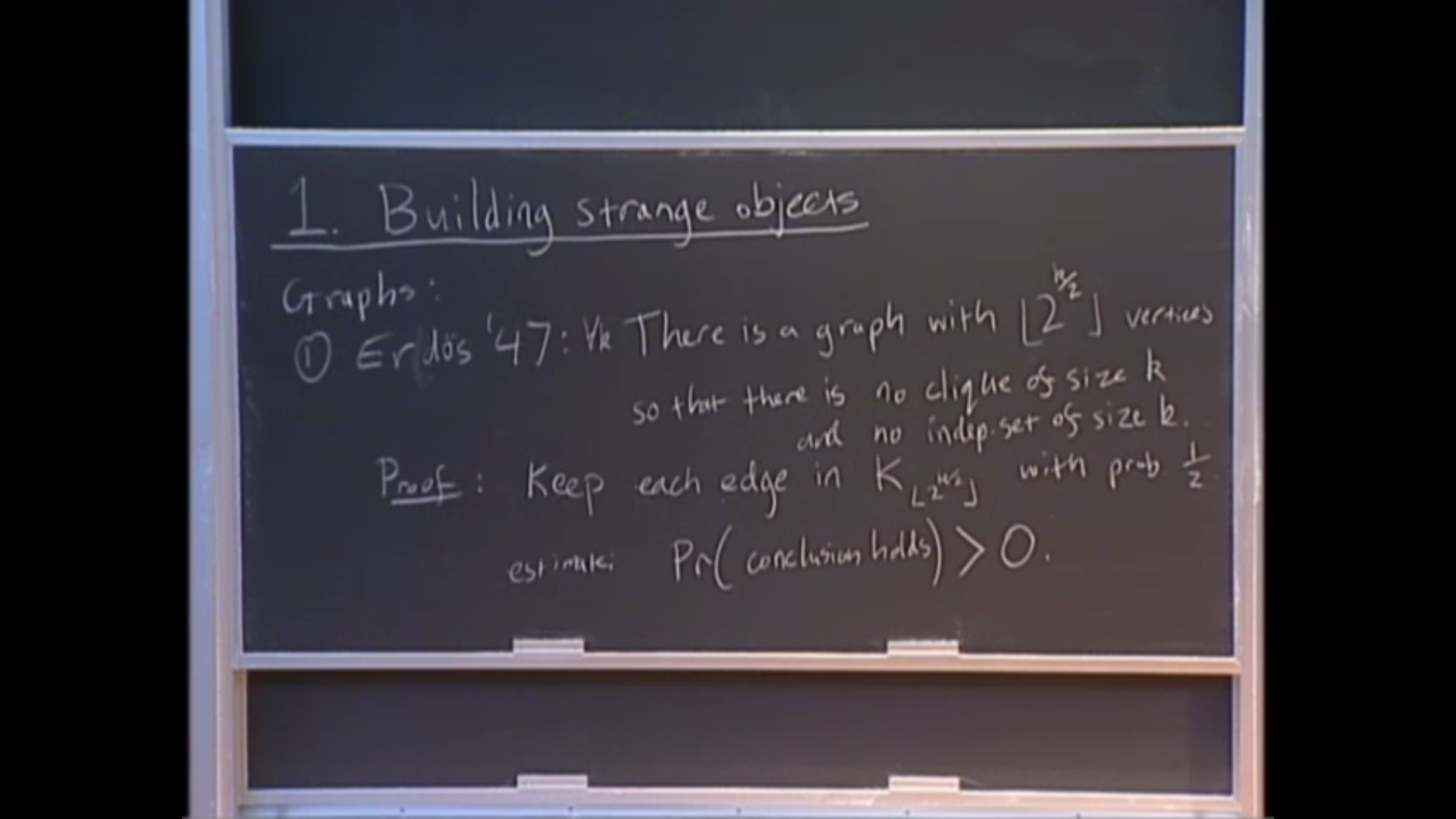Random groups and large-scale geometry
Presenter
August 25, 2016
Keywords:
- geometric group theory
- hyperbolic group
- random graphs
- expander graph
- asymptotic results
- random groups
- generators and relations
- word problem
- Kazhdan's property T
MSC:
- 20F65
- 20F67
- 20F05
- 20Fxx
- 20-xx
- 05C80
- 05C69
- 05C25
- 05Cxx
Abstract
Probabilistic methods have been used highly successfully in graph theory over the past 70 years, with two different flavors of approach. First, such methods are used to show the existence of graphs with some pathological properties that are hard to explicitly construct. Second, random or typical graphs are studied in their own right as interesting and important objects.
In Gromov's 1987 paper on hyperbolic groups, he described how many typical finitely presented groups are hyperbolic. Since then a variety of authors have studied random groups, again with the two approaches above: building exotic counter-examples (notably Gromov's construction of a finitely presented group that does not coarsely embed into Hilbert space), and the study of properties of typical finitely presented groups in a variety of models (notably Gromov's density model).
In this talk we'll survey this history and discuss some work, in part joint with Cornelia Drutu, which takes steps towards distinguishing the quasi-isometry types of random groups.
